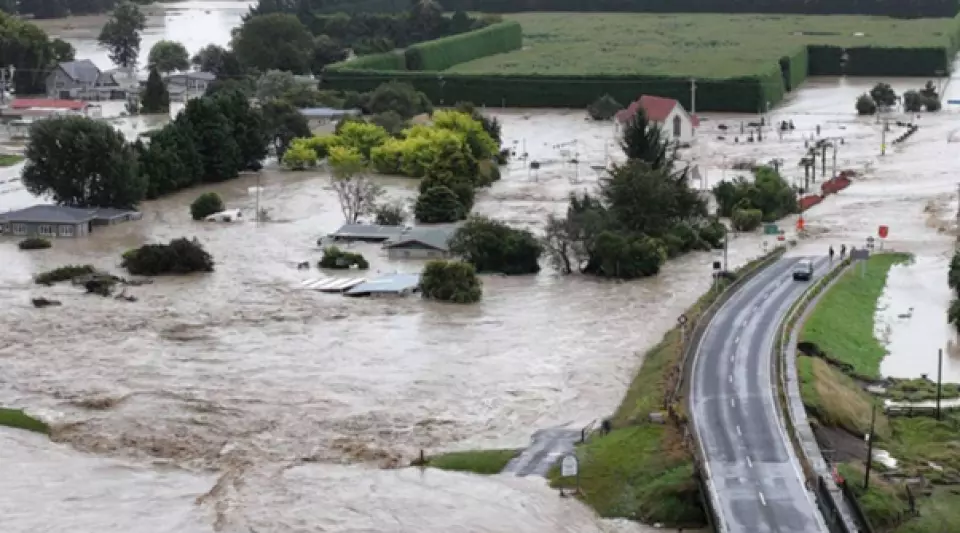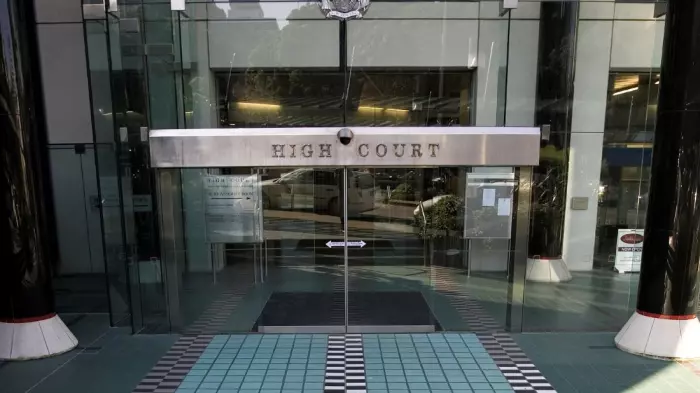Suncorp NZ: nearly all 32,000 cyclone & flooding claims settled by Xmas.
When the flooding and Cyclone Gabrielle struck the North Island early this year, Suncorp New Zealand set a goal of having displaced customers paid out or back in their homes by Christmas. They are nearly there.
The insurer received 32,000 claims from these events and of these almost 800 Vero customer homes were assessed as unliveable, meaning residents had to move out.
“That’s when the emotion comes through. They wanted to know the process they had to go through and when repairs would start and finish,” says Jimmy Higgins, chief executive of Suncorp New Zealand, which owns Vero Insurance, Asteron Life and has a 68 per cent stake in AA Insurance.
Just days after the Auckland flooding and Cyclone Gabrielle, Higgins flew over the damaged areas in a helicopter to get a first-hand view of the destruction and plan a response. He spoke to residents on the ground in Auckland’s Henderson and Wairoa in the Hawke’s Bay. They had not been able to return to their homes – and some never would.
“My initial reaction when I flew over Hawke’s Bay was ‘it will be hard to come back from this.’ I could see blocked rivers, landslips and silt up to the gutter level of houses. It was devastating to see. This was not just about insurance and claims, it’s about people’s homes and lives. Our focus on supporting customers to rebuild their lives and get back in their homes by Christmas has provided a central motivating driver for our workforce, our suppliers and community.”
By Christmas the insurer is forecasting over 90 per cent of all claims from the two events will be sorted – either paid out through cash settlements or repaired. Higgins says just under 30 of the almost 800 unliveable Vero customer homes won’t be completed in 2023; most of these are on hold at the customers’ request, waiting for local council word on a buy-out, and Vero is aiming to have the others completed during the first quarter of next year.
“Because most of our customers had not made an insurance claim like this before, we ran through the options and, in many cases once customers understood what their options were, there was relief. Some wanted to take their insurance pay-out and move, some arranged their own builders, while others took advantage of the managed repair we offered. Once their repair job was scoped and priced, customers had more certainty so they could make the decision on what to do next.”
Higgins says one Hawke’s Bay customer he met was in complete distress on the day he visited, the day the government land categories were first announced. She lived by herself and had no idea what to do.
 Jimmy Higgins, chief executive of Suncorp New Zealand.
Jimmy Higgins, chief executive of Suncorp New Zealand.“We sat her down and talked through all the various options. Once she understood and realised there were choices you could see the anxiety lift.”
He says they were able to refer the customer to helplines and support services and she’s since moved back into her home.
With significant experience supporting communities through previous large scale disaster response, Suncorp was quick to identify potential challenges ahead. They flew in assessors and builders from Australia and used claims staff in Australia to help answer phones, lodge and manage claims. They knew too that building supplies may be scarce and proactively sourced plaster board and jib, securing cabinet makers and lining up key supply chain requirements to avoid potential bottlenecks.
“Our ability to manage repairs for customers provided benefit in terms of accessing and distributing resource through some challenging local and international conditions and alleviating the stress of customers having to organise builders and contractors in already very stressful circumstances.”
Higgins recognises the frustration of some customers over the length of time some claims take. He says though, given the size and complexity of the event response, he is proud of Suncorp’s progress. Claims from the Christchurch earthquakes are still trickling through; in Australia it has taken years to settle smaller claims numbers.
“There have been bottlenecks on geotech resources and land valuations which have contributed to delays and we are very keen for local councils to finalise their buy out processes with customers. It’s so important for councils to get the land categories right and ensure we have robust infrastructure mitigating these risks in the future.”
Throughout Suncorp has engaged with local and central government on what else was needed for the recovery. Higgins says there needed to be an approach for consenting, policies on asbestos removal, and on silt removal. The sector had experienced this before, when a community gets locked out - it was going to need a centralised, coordinated effort.
Input from Higgins, and others, to the Cyclone Gabrielle Recovery Taskforce insurance subcommittee, helped the government form its policy on buyouts. It was also an opportunity to build an understanding of natural hazard risk, he says, which is supporting councils to make buy-out offers to homeowners for possible future managed retreat. This is something that has not been done before and is being recognised internationally, Higgins says.
The lessons learned are that we need infrastructure designed for one-in-50-year, even one-in-100-year, weather events - not one in 20, Higgins says, and we need to stop building on flood plains.
“These weather events have raised community awareness of natural hazard risks. We need to get more sophisticated at flood modelling particularly at a council level, to improve the quality of information they collect in the regions they are accountable for.
“We have the National Adaptation Plan and, by helping communities adapt to the effects of climate change, we are going in the right direction. We simply can’t forget what happened in the Auckland flooding and Cyclone Gabrielle events.
“At an insurer level, in the short term we’ve still got eyes on claims fulfilment and getting our customers home or with a clear pathway forward. We’re also turning our focus to where we can contribute to something equally as important: preventing, or limiting the impact of, large-scale events like these. All New Zealanders have a part to play in New Zealand’s future resilience.”
For more information: Over and Above Tools | Vero
Video of the flooding:






